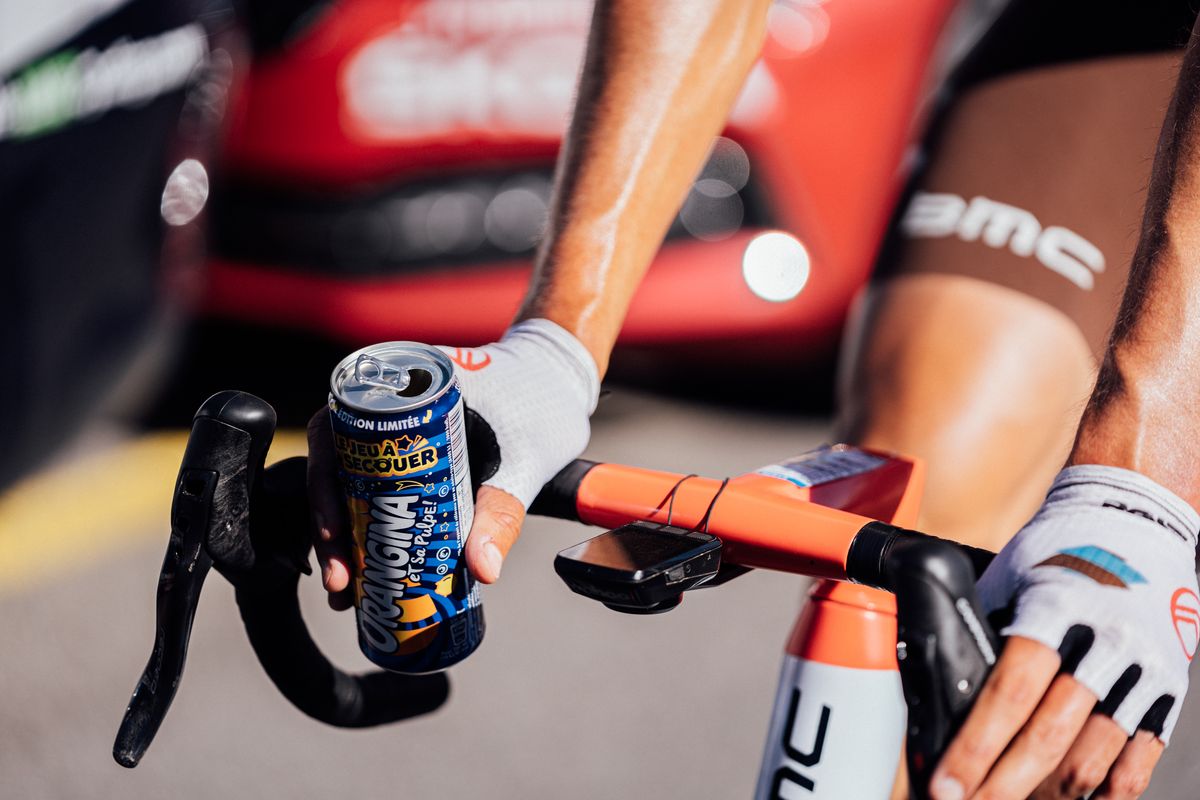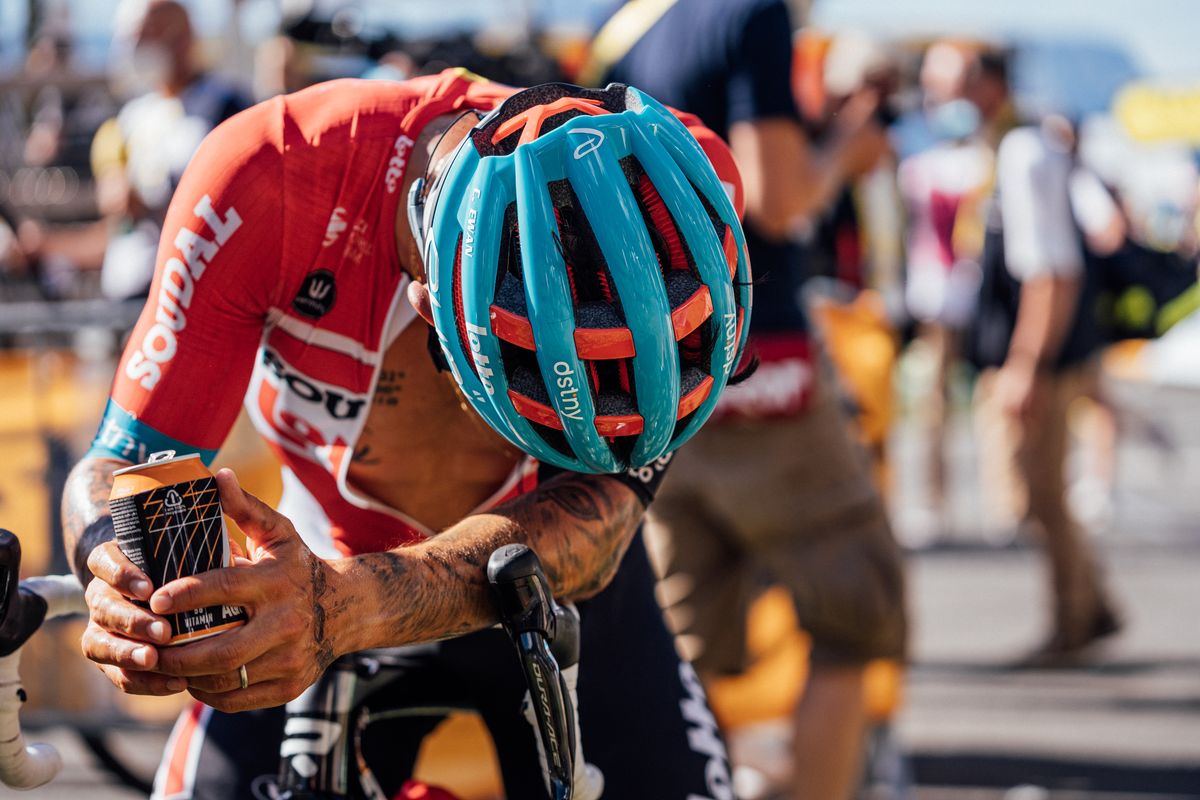Consuming and buying carbohydrate energy drinks and gels can get expensive. Making your own carb-based energy drink is one way to mitigate against this expense and, believe it or not, fixing your own nutrition doesn’t have to be a complex affair.
What does the modern-pro cyclist consume and drink on a ride?
As the entirely new saying goes, “Carbs are king!” Gone are the days in which pro cyclists would head out for a six-hour ride, fueled by a teaspoon of olive oil, a bidon of water, and aspirations of being as thin-skinned as a finely sliced prosciutto. Today, in the pro peloton, carbohydrates reign supreme.
This is for good reason. Modern research tells us that when it comes to racing and high-intensity efforts, fueling these with carbohydrates is the way to go. Consuming higher amounts of carbohydrates will result in less of a drop-off in performance as your riding goes on; whether that’s deep into a training session, a one-day race, or stage race. Typically, the pros will get this through a combination of carbohydrate drinks mix, gels, and solid foods like bars and rice cakes.

Credit – @SWPix
How many carbohydrates do the pros consume?
In terms of how much carbohydrate a professional cyclist might consume, for a hard stage of the Tour de France, they’ll be aiming for 90–120g of per hour. That’s 360–480 calories per hour — or 1.5–2 Mars Bars, in old money. This might sound like a lot, but for a grueling stage, an elite-level cyclist might be burning 1,000 calories per hour, or even more.
That being said, for us mere mortals, it may not be necessary to load up on 120g carbohydrates per hour for a gentle pootle to the café. But for a race scenario, or more intense training intervals, even as an amateur you’ll see a benefit of consuming at least 90g of carbs.
Why do cyclists consume so many carbohydrates?
For all endurance athletes, carbohydrates are the primary energy source, especially as things get more intense. The benefits are particularly prominent towards the end of a race, in which it’s been observed that performance drops off less when sugars are kept high. Additionally, for back-to-back days of intense riding, a stage race for example, making sure your glycogen stores are topped up is vital for both performance and recovery.

Credit – @SWPix
Dual-Fuel To Make You Go-Go
You may hear or see the term “dual fuel source” bandied about in energy supplements these days. This might sound like a term more appropriate for discussing hybrid combustion engines, but what it means for endurance athletes is that an energy drink or gel contains two different types of carbohydrate. These two types of energy source are fructose and glucose. Why dual fuel sources are now so in vogue is because they use two different “transporters” to get fructose and glucose absorbed into your body.
Why this is important, is because there is a limit to how much carbohydrate one transporter can process. By using two separate transporters the amount of carbohydrate your body can process is increased. Ultimately, this means you can process more carbohydrate (in the form of glucose and fructose) more quickly and efficiently, as well as more per hour. Additionally, by absorbing the carbohydrate more quickly, there is less time for it to cause gastric distress.
What do you need to make your own carbohydrate-based energy drink?
Most carbohydrate-based energy drinks are made up of some combination of glucose and fructose. Glucose can be obtained from maltodextrin or dextrose, both of which are completely made up of glucose. Fructose can be obtained from regular table sugar, which offers a 1:1 glucose to fructose ratio (i.e. 100g of sugar will contain 50g of glucose and 50g of fructose).
So, making your own sports drink is as simple as combining two-parts sugar to one-part maltodextrin. Since you also want your drink to hydrate you, it’s important to add some form of electrolytes, this can be as simple as a pinch of salt, or you can use a tablet.

Credit – @opicurefoundation
What is maltodextrin and dextrose?
Maltodextrin is a polysaccharide, or a carbohydrate comprised of several sugar molecules bonded together. Essentially it is a starch made up of multiple sugars. It’s easily digestible and will be absorbed quickly into the body, meaning it can replenish glycogen stores fast. Typically, maltodextrin comes in the form of a white power and is obtained from foods, such as rice, corn, wheat, and potato starch.
Dextrose is also a form of glucose. However, it differs from maltodextrin as it’s a monosaccharide, which you may guess, means it is made up of only one sugar molecule. It’s quickest and most absorbable carbohydrate going. Likewise, it takes the form of a white powder.
In terms of which is better, there is little between the two. Dextrose tends to be a bit sweeter than maltodextrin, though.

